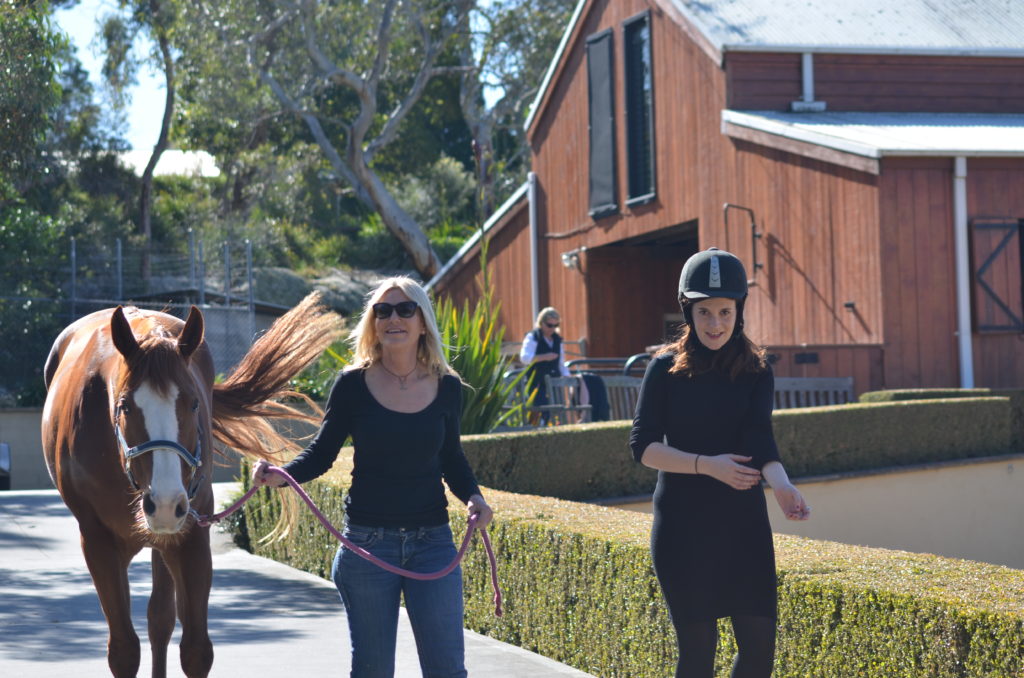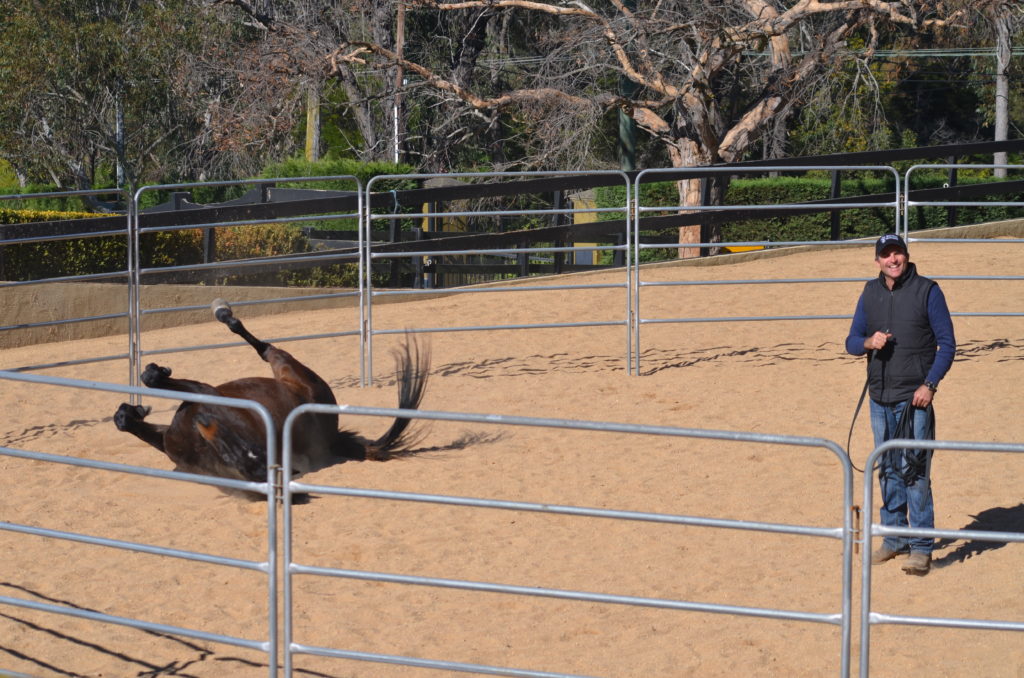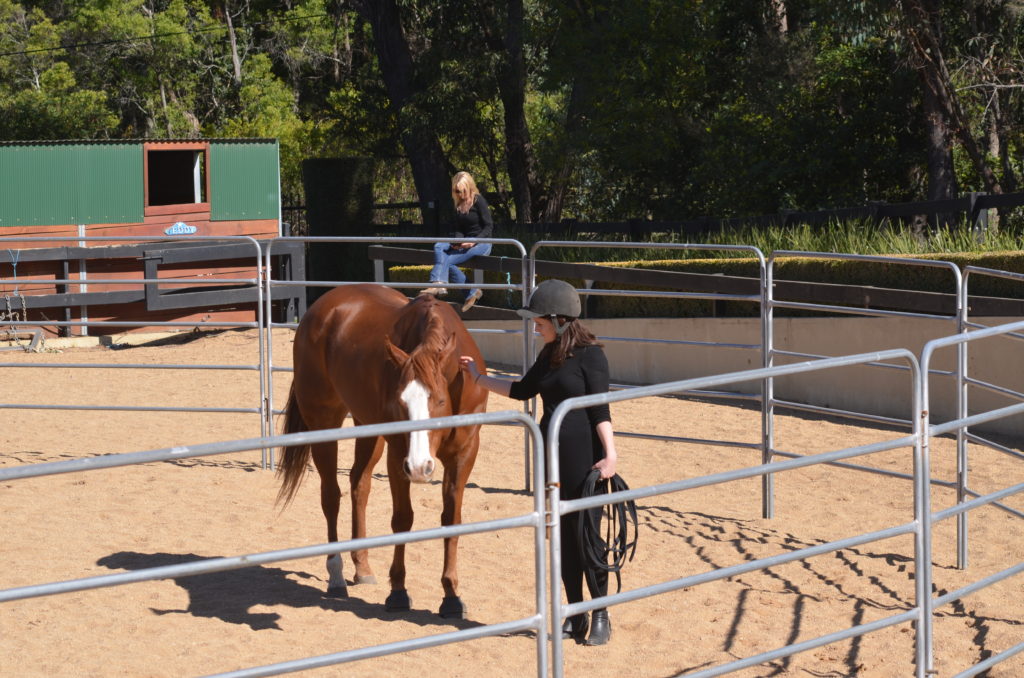A horse walks into an office and the HR manager says, “why the long face?” What am I on about? What have horses got to do with HR? Well, in this instance, more than you think.
You’ve heard of horses for courses, but what about courses for people to learn leadership from horses? Before you picture a horse standing at a lectern pointing its hoof towards a powerpoint presentation, neighing words like “value” and “culture”, I’m not talking about a traditional leadership course...but perhaps you’ve already picked up on that?
Frontier Leadership is a Sydney-based equine facility that pairs modern leadership principles with the natural wisdom and intuition of horses. Participants learn about their leadership styles, and that of their colleagues, and build on areas they’d like to improve by taking feedback straight from the horse’s mouth. (Yes, this article will be full of horse puns. So strap on your saddle and let’s giddy up!)
Looking a gift horse in the mouth
This unconventional style of leadership training intrigued the HRM team. We weren’t quite sure what it would entail or how it could possibly benefit a workplace. These days, there are a mountain of experimental leadership and team building courses to choose from; from graffiti art workshops to extreme adventure experiences. It’s hard to know what really works and what’s a fleeting gimmick.
The benefits of equine therapy to rehabilitate returning service men and women has been widely documented but equine leadership is a fairly new concept in Australia. With this in mind, we thought it would be best if I actually got my hooves dirty and attended a session.
 From the left: Teddy, Mandy and Kate “getting her hooves dirty”.
From the left: Teddy, Mandy and Kate “getting her hooves dirty”.
Heading into the session, I wasn’t sure how I felt about horses. I’ve always admired them from afar and, like most girls my age, I went through the Saddle Club fandom of 2005. But other than adoring them through the safety of a TV screen, I’ve otherwise found them to be a little intimidating. It’s something about their stature and the way they give you a sideways glance (although I suppose that’s the only option when your eyes are on opposite sides of your face).
This feeling is why the program made sense to me. I had to push through it in order for the session to be a success. Horses aren’t like dogs who will love you instantly and unconditionally, and they won’t float idly in the background of your life like a goldfish. You need to earn a horse’s trust and then maintain it, much you like you would a human.
I met with Frontier’s co-founders Emma Kirkwood, a seasoned HR professional, and James Meurer, an expert horse trainer, who both assured me that I wasn’t alone in my trepidation. In fact, they’ve had attendees with full-blown phobias who’ve started their day perched in the corner of the room – only to end it by hugging their new four-legged pal.
The Frontier training aims to encourage participants to get back to the grassroots of communication. With our workplaces engulfed by technology, being aware of how we connect and communicate is more important than ever before.
“How we relate to one another isn’t just about the words we type or what we say,” says James.
“We’re not saying that technology doesn’t play an important role, because it does, we’re just highlighting that there needs to be a balance.”
Emma echoed James’ point. “If we don’t have those interpersonal skills and aren’t comfortable being with other people, we will be ruled by technology. There are so many benefits to come from connecting with your colleagues. Loneliness in the workplace is on the rise; it’s a significant health and safety issue,” she says.
“The HR function has a critical role to play in people’s ability to connect in a highly technologically connected world. And what we offer here is that ability to engage with each other and learn new ways to appreciate people.”
At its core, the program is about forming a relationship with a horse. It sounds simple, but when done properly, the benefits of this day long training can be long-serving.
A horse for all seasons
Much like your office consists of a mixed-bag of personalities, so too does the Frontier stable. Groups are matched with a horse that will cater to their specific needs.
“Horses don’t care what position you hold. They’ll give you instant and honest feedback about what’s working and what’s not,” says James.
I was told if a leader is looking to develop assertiveness, they’ll be paired with Scout. He’s like an employee who has worked in the business for years. He likes things done a certain way. He requires a firm hand, forcing the participant to step up and exude a strong, dominant energy.
Scout can’t start his day without his “morning coffee” (a roll in the dirt) and even though this is somewhat of a no-no in training circles, they said it was best to let him get it out of his system before we tried to get anything out of him. A good lesson for employers, let your people settle into their day, their way, before piling on the work.
 Image: Scout enjoying his double-shot soy latte and James.
Image: Scout enjoying his double-shot soy latte and James.
For leaders who already possess a dominant streak, and are looking to tone it down, they’ll be introduced to Bondi. She’s a fierce and powerful blonde with an attitude to boot. She’s a real nine-to-five kind of lady. Out of hours, she’s sweet and demure but when she’s at work, she’ll put you through your paces. Egos have to be left at the door when you enter the Frontier property and even more so when you’re teamed with Bondi.
I trained with Teddy, a kind-hearted yet somewhat lazy horse. I was glad. I could relate to him most of all.
Lead a horse to water…
We started with an information session discussing the positive effects of training with horses and relating the results back to the workplace. Then I observed a demonstration session. James got the horse moving and showed me some exercises aimed to make the horse follow him around the arena. It did, but what did I expect from a guy who has been around horses his whole life? Next, it was my turn.
As I said before, Teddy is the kind of employee who turns up late and leaves early. He’s a nice guy, fun for a laugh, but his “care factor” is a little lower than most. As a fairly low impact person myself, I was encouraged to get “bigger and louder” in order to make Teddy do the exercise properly.
It wasn’t easy but I eventually pushed past the embarrassment of looking like a fool – as I waved my rope in the air, hissing and flapping my arms about – and once I’d put that assertive energy into the space Teddy was following me around like a devoted fan.
After all participants have tried the exercise, they debrief with Emma and James over lunch and identify their key take away points from session one. After lunch, they are put into groups of three and asked to take their horse through an obstacle course.
Emma and James said this is where participants are encouraged to think laterally and develop strategies as a team. This is where the adage “you can lead a horse to water but can’t make it drink” really rings true.
The exercises are designed to show leaders that your employees need to choose to be led by you and that it’s imperative to develop a strong rapport with them. Rejection from the horse can be really beneficial. That’s how life works, it’s how business works. Things don’t always go to plan and we need to be adaptable. A horse won’t laugh at you for making a mistake.
I mean, they might poo somewhere near your vicinity but I was promised that had nothing to do with me…
Spending the day with a horse. Yay or neigh?
The biggest thing I took away from the day was how to demonstrate my intent through nonverbal cues. I was asked to think about how I walk into a room. What kind of energy do I give off? Do I brighten up the space with my presence or drain the room by simply being there? Being conscious of our body language is essential to being an effective leader, say Emma and James.
The Frontier approach takes the formality out of leadership training. You’re not sitting in a stuffy boardroom with your eyes glued to a slideshow. You’re not participating in stale trust falls or watching “motivational” YouTube clips. You’re out in nature, spending time with animals and your team, working towards a common goal; being cheerleaders for one another.
Also, you don’t run the risk of participants falling asleep during the leadership presentation…not when they’ve got a 500 kg horse galloping circles around them; employee engagement in the training is heightened, naturally.
This type of training probably isn’t for everyone, and would work best for teams that are open to trying something new (and like being outside). Its success is underpinned by a willingness to step outside of your comfort zone. If a team comes into the day with a barrier up, and isn’t prepared to budge (a little like our friend Scout), they might not get much out of it.
But personally I think we don’t need to quit horsing around. In fact, I think we should do it more often.
Lead image credit: Kaboompics via Pexels
Other images supplied by Frontier Leadership
Build your managers’ leadership skills such as conflict management and negotiation, with AHRI’s in-house courses on leadership and management topics.



Wow. Very innovative type of leadership training. Don’t know how competent I am with horses but the adventurer inside me is excited to give it a go.